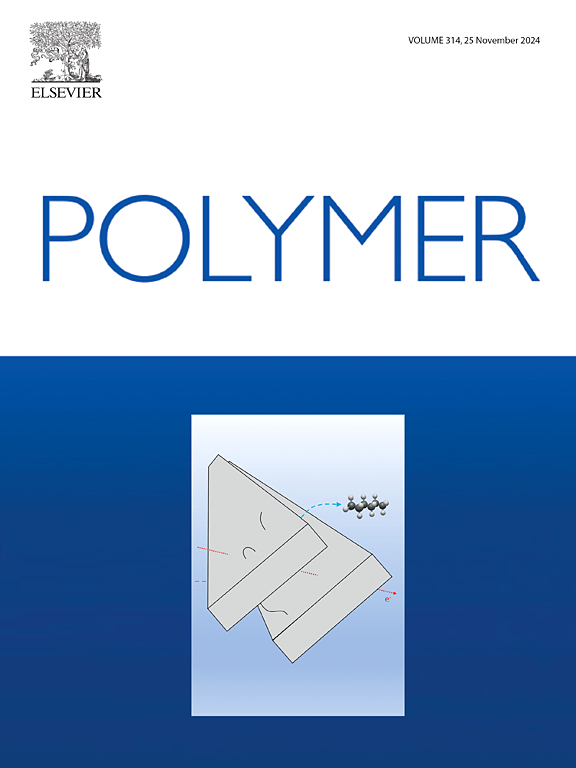Mathematical modeling of swelling and shrinking dynamics in pH-sensitive hydrogels composed of alginate, anionic cellulose, and chitosan
IF 4.1
2区 化学
Q2 POLYMER SCIENCE
引用次数: 0
Abstract
This study develops a mathematical model to predict the swelling and shrinkage dynamics of pH-sensitive hydrogels composed of alginate, TEMPO-oxidized cellulose nanofibers (TOCNF), or chitosan. We investigated the effects of biopolymer type, cross-linking density, and/or pH conditions on hydrogel behavior. Swelling and shrinkage experiments revealed that cross-link density primarily governs the final equilibrium state but may also modulate the swelling and shrinkage rate under specific environmental conditions. To quantify this behavior, we introduce a novel parameter, the swelling/shrinkage affinity (asw, ash), which enables predictive evaluation of hydrogel responsiveness. The model integrates experimental data with rheological measurements, linking cross-link density to mechanical properties such as shear modulus. Rheological measurements validated the findings, correlating mechanical properties with cross-link density and aligning with swelling and shrinkage data. This work enhances the fundamental understanding of hydrogel behavior and offers a predictive tool for optimizing formulations in biomedical, environmental, and industrial applications. This framework may be extended in future work to incorporate external stimuli such as temperature or electromagnetic fields, potentially broadening the application of smart hydrogel systems.


由海藻酸盐、阴离子纤维素和壳聚糖组成的ph敏感水凝胶中膨胀和收缩动力学的数学建模
本研究建立了一个数学模型来预测由海藻酸盐、tempo氧化纤维素纳米纤维(TOCNF)或壳聚糖组成的ph敏感水凝胶的膨胀和收缩动力学。我们研究了生物聚合物类型、交联密度和/或pH条件对水凝胶行为的影响。膨胀和收缩实验表明,交联密度主要控制最终平衡状态,但也可能在特定环境条件下调节膨胀和收缩速率。为了量化这种行为,我们引入了一个新的参数,即膨胀/收缩亲和度(asw,灰分),可以预测水凝胶的反应性。该模型将实验数据与流变测量相结合,将交联密度与剪切模量等力学性能联系起来。流变学测量验证了这一发现,将机械性能与交联密度相关联,并与膨胀和收缩数据进行比对。这项工作增强了对水凝胶行为的基本理解,并为优化生物医学、环境和工业应用中的配方提供了预测工具。这一框架可能会在未来的工作中得到扩展,以纳入外部刺激,如温度或电磁场,潜在地扩大智能水凝胶系统的应用。
本文章由计算机程序翻译,如有差异,请以英文原文为准。
求助全文
约1分钟内获得全文
求助全文
来源期刊

Polymer
化学-高分子科学
CiteScore
7.90
自引率
8.70%
发文量
959
审稿时长
32 days
期刊介绍:
Polymer is an interdisciplinary journal dedicated to publishing innovative and significant advances in Polymer Physics, Chemistry and Technology. We welcome submissions on polymer hybrids, nanocomposites, characterisation and self-assembly. Polymer also publishes work on the technological application of polymers in energy and optoelectronics.
The main scope is covered but not limited to the following core areas:
Polymer Materials
Nanocomposites and hybrid nanomaterials
Polymer blends, films, fibres, networks and porous materials
Physical Characterization
Characterisation, modelling and simulation* of molecular and materials properties in bulk, solution, and thin films
Polymer Engineering
Advanced multiscale processing methods
Polymer Synthesis, Modification and Self-assembly
Including designer polymer architectures, mechanisms and kinetics, and supramolecular polymerization
Technological Applications
Polymers for energy generation and storage
Polymer membranes for separation technology
Polymers for opto- and microelectronics.
 求助内容:
求助内容: 应助结果提醒方式:
应助结果提醒方式:


